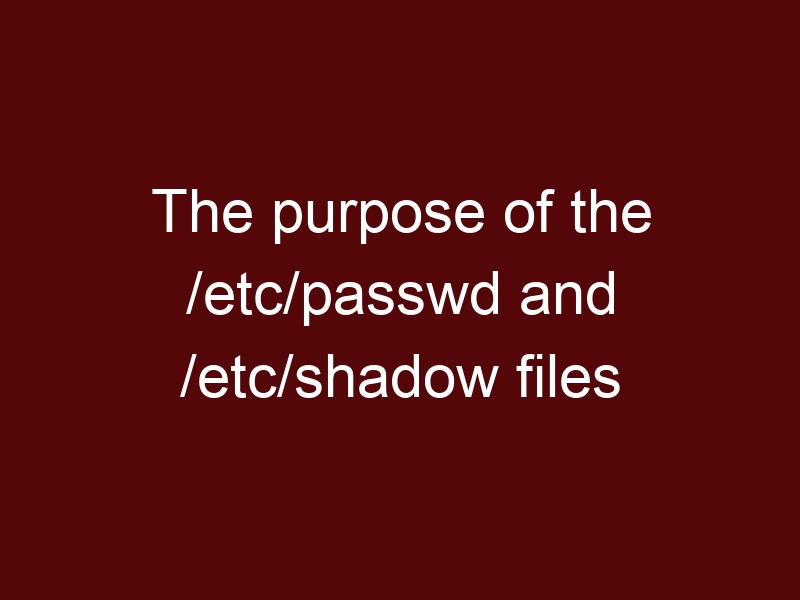The /etc/passwd and /etc/shadow files are both crucial components of user authentication and account management in a Unix-like operating system, including Linux. They store essential user information, but the way they handle sensitive information differs. Here’s a breakdown of their purposes:
/etc/passwdFile: The/etc/passwdfile is a text-based file that stores basic user account information. It was historically used to store user details, but nowadays, its main purpose is to provide user account names and identify which user owns each running process. Each line in the/etc/passwdfile represents a user account and consists of several fields separated by colons (:). The fields include:- Username
- Encrypted Password (historically, now moved to
/etc/shadow) - User ID (UID)
- Group ID (GID)
- User Information (GECOS)
- User Home Directory
- User Shell
/etc/shadowFile: The/etc/shadowfile is a more secure counterpart to the/etc/passwdfile. It stores the encrypted passwords and related information for user accounts. The primary reason for moving encrypted passwords to a separate file is to enhance security. The/etc/shadowfile is accessible only by the root user and theshadowgroup. This limits potential security breaches because regular users cannot access the file to retrieve password hashes. Each line in the/etc/shadowfile corresponds to a user account and contains fields like:- Username
- Encrypted Password
- Password Aging and Expiry Information
- Account Expiry Information
- Account Locking Information
- Reserved Fields
In summary, while both the /etc/passwd and /etc/shadow files play roles in user authentication and account management, the /etc/passwd file provides basic user details and the /etc/shadow file securely stores the encrypted password hashes and related account management information. The separation of password-related information into /etc/shadow is a security measure to prevent unauthorized access to sensitive user data.





